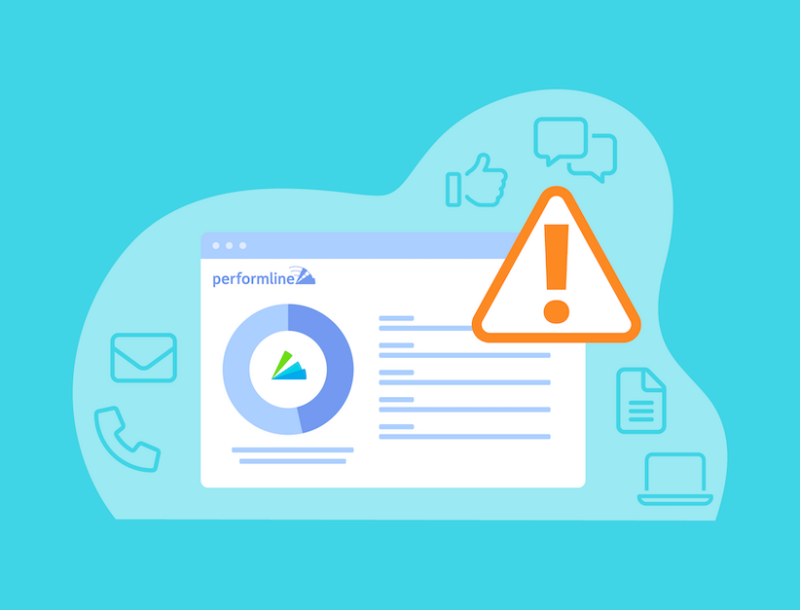Balancing Innovation with Regulation for FinTechs

Last week was a big week for PerformLine, as our company celebrated achieving a significant milestone. Our CEO, Alex Baydin, had the vision to kick off the week by bringing in a guest speaker to highlight the stakeholder that ultimately can benefit from when our customers deploy our technology-the consumer.
Mimi Joy, Senior Director at the Financial Health Network (FHN), described how her advocacy group has invested nearly two decades in uncovering what works to advance the financial health of consumers and shape meaningful improvements in people’s financial lives, particularly those that are most vulnerable.
In their most recent research report, FHN examined how households in America managed their finances and accessed credit during the second year of the pandemic. Although spending on total interest and fees declined in 2021, disparities in total fees and interest paid by race, ethnicity, and income remain vast, demonstrating little change year over year.
The FHN estimated that on average, Black households spent more than twice what White households spent on interest and fees as a percentage of their income (7% vs. 3%), while Latinx households spent 1.4 times more than White households (5% vs. 3%). Households with low-to-moderate (LMI) incomes spent nearly three times more of their income on interest and fees than higher-income households (8% vs. 3%).
While it was a bit rattling to hear that research, it was also good to hear of the work the FHN is doing, especially through its Financial Solution Lab, a fintech accelerator that is proud to have well-known companies as graduates, such as Dave, Even Financial, and Petal.
The FHN sees the value in having these fintechs pioneer innovative and successful solutions for addressing consumer financial health needs. We at PerformLine are proud to be supporting our clients in this space with product solutions to address some of those very concerns within consumer protection.
Poignantly, just prior to Ms. Joy’s address at our office, the CFPB announced that it will start using its authority to examine nonbank financial services institutions whose activities the CFPB has “reasonable cause to determine pose risks to consumers.” This announcement to “level the playing field” between banks and non-banks was picked up by American Banker which was quick to put a finer point on the potential targets for the CFPB, with the headline “CFPB invokes authority to examine nonbank fintechs.”
The battle line seems to be drawn between traditional banks, legacy banks, and those companies providing banking services that may be categorized as “nonbanks,” such as fintechs.
For those opposed to how fintechs are regulated today, the “weapon of choice” is to add further regulation, or to bring them into the “regulatory perimeter” – a term coined at the Federal Reserve Bank of Philadelphia’s Fifth Annual Fintech Conference in November of last year by Acting Comptroller of the OCC, Michael Hsu.
He emphasized the need to “modernize the [financial] regulatory perimeter” by subjecting fintechs and digital asset firms that offer banking services to the U.S. prudential regulatory framework. In addition, Hsu stated that the regulatory perimeter must take into account not only activities, but also the nature of bank-fintech partnerships “that enable fintechs to offer banking services to customers” where “often customers are unable to distinguish between providers.”
When asked for her thoughts about the recent CFPB announcement, Ms. Joy responded that she hoped this move by the CFPB would not have the inadvertent effect of stifling innovation with an increased regulatory burden. After all, one of the main reasons that fintechs have been able to innovate so quickly to meet market demand is because they are free from all of the prudential regulations that apply to traditional banks, such as stronger capital, liquidity, and certain risk-management requirements.
This brings up an interesting challenge of reaching a balance between innovation and regulation as consumers continue to adopt fintech products and services. Traditionally, regulators have struggled to keep up with the breakneck pace of innovation in the financial services sector.
I would agree with Acting Comptroller Hsu that it is not sufficient to simply redefine what activities constitute “doing banking.” Instead, regulators can consider what is appropriate with respect to the relationships between banks and fintech firms and ask questions such as:
- At what point do fintechs begin to function like banks? Are the risks the same?
- Are fintechs covered by certain regulations already in the books, such as the OCC’s third-party risk management requirements over banks and their fintech partners?
- Do the partnerships pose a safety-and-soundness risk or a consumer protection risk?
The best method to mitigate these risks may not always be further regulation, or increased oversight by regulatory bodies. To that end, I was pleased to read that one of the OCC’s goals is to establish a team that understands cutting-edge technologies and establishes consistent oversight policies in response, adding fintech supervision specialists to reflect evolving needs. The Fed is also turning to the private sector to recruit new tech talent to help it evolve with the financial system.
Within this shifting regulatory landscape, I hope that the financial services industry can continue to innovate through the use of technology. Firms can also leverage technology similar to what our clients use with PerformLine to stay in compliance with sales and marketing regulations and internal branding policies and procedures. Last week was indeed the week to celebrate at PerformLine, keeping in mind our employees, our customers, and just as importantly, the consumers that our technology seeks to protect.


